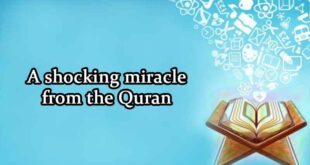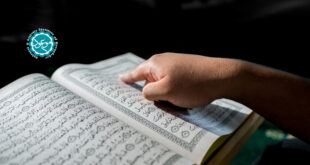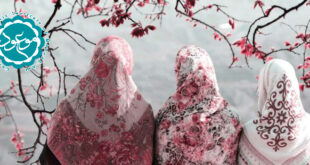The conference of 1926 in Cairo by the Muslim religious and political leaders from a number of countries was an emotional attempt to revive the Caliphate. As they were non-governmental delegates, they decided to hold a “Grand Assembly of the Ummah” in a country which shall be chosen by the delegates of the Islamic peoples will discuss the measures to be taken with a view to the establishment of the Caliphate fulfilling all the conditions prescribed by the Shari’ah (Islamic law)” [OIC, Abdullah al-Ahsan, IIT, Herndon, VA, USA, 1988, p.11-12].
However, the gifted Muslim leaders continued their strenuous effort to construct a common platform for the Ummah. By then, the idea of creating a separate Muslim state on the Indian subcontinent was growing. It was an ideal way to unify the Ummah as Allama Iqbal, the most accomplished thinker of the modern Muslim world, emphasized. [Atlas of the Islamic World Since 1500, Francis Robinson, UK, 1982, p.149]Our essence is not bound to any place;
the vigor of our wine is not contained
in any bowl ; Chinese and Indian
Alike the shard that constitutes our jar,
Turkish and Syrian alike the clay
Forming our body ; neither is our heart
Of India, or Syria, or Rum,
Nor any fatherland do we profess
Except Islam.
(Rumuz-i-Bekhudi, 1918; trans. Arberry)
However, he came to terms with the reality of the Indian situation and started campaigning vociferously for the creation of Pakistan where the “Islamic Shari’ah could be enforced”.
The recent works on regeneration of the Ummah and thus realization of global Islamic unity through going back to the pristine purity of Islam were initiated by two towering personalities in 1928 and 1941. Sheikh Hasan al Banna’s Ikhwanul Muslimin in the Arab world, Imam Musa Sadr in Lebanon, Ayatullah Sayyid Muhammad Baquir al-Sadr Shaheed in Iraq, Maulana Sayyid Abul Ala Mawdudi’s Jama’at-e-Islami in Indian sub-continent and finally Imam Khomeini(R.A.) in Islamic Republic of Iran have been instrumental in molding the characters of millions in modern Muslim history. The glorious Islamic Revolution in Iran under the dynamic leadership of Imam Khomeini(R.A.) has strengthened the Islamic Ummah and the Islamic Revivalist Movements throughout the world.
The necessity of unity was only felt by the Muslim leaders when, after the occupation of Jerusalem by Israel in 1967 war, Al-Aqsa mosque was desecrated under Zionist occupation on 21 August, 1969. A Summit Conference representing 24 Muslim countries was held in Morocco on 22-25 September, 1969 with a view to “promoting among themselves (Muslim governments) close cooperation and mutual assistance in the economic, scientific, cultural and spiritual fields, inspired by the immortal teachings of Islam”.
This is the forerunner of OIC (The Organization of Islamic Conference) whose membership has increased to 46 countries. But apart from being an ornamental body, the OIC has so far failed to exhibit any ray of hope for genuine Islamic unity the Ummah is so eagerly waiting for.
So if we aspire to be united we should have that ideal in our mind. We might never attain to that high level, but we should at least keep it as a goal, and as a criterion by which we judge how far towards the unity we have gone.
The characteristics of that community are:
First, `Imaan'(beliefs)
Secondly, `ibaadah(worship)
Third is akhlaq (moral behavior) and this is the fruit of Imaan and `ibaadah.
The fourth point is defending Islam
The last point is that of political unity and following the Ulil Amr Muslimeen(leader of the Muslims) and without any doubt Ayatullah al-Uzma Sayyid Ali Khamene’I, the Supreme Leader of Islamic Republic in Iran is the Ulil Amr Muslimeen.
The solution for the cause of disunity would be to grab a hold of the righteous path and live by it. That path is the Holy Prophet Muhammad (S.A.W.) and his Holy Ahlul Bayt(A.S.).
A perception of one-Ummah feeling is to be created among the Muslim people all over the world. As burning of a finger aches the whole body, so should be the sensitivity of the Muslims. The sufferings of the Palestinians, Afghans, Syrians, Myanmarese and Iraqis, for example, should be so felt by them that the whole Ummah cry out together and come up with realistic help.
Equality and justice need to be established within the Ummah on the basis of Islamic brotherhood.
The Holy Qur’an says:
… Lo ! the noblest of you, in the sight of Allah, is the best in conduct. (Al-Hujurat 49:13)
But Iran has already dealt with the above issue and so can we. The solution that is adopted by the government of the Islamic Republic in Iran after the glorious Islamic Revolution of 1979 is workable all over the Muslim world. It is clearly stated in the Constitution of the Islamic Republic of Iran that the law of the land in Iran would be based on Fiqh Jafari, but the followers of all other schools would be free to practice their own Fiqh in their private and personal affairs. This highly ingenious but equally simple and uncomplicated approach represents a really enlightening lesson for the entire Muslim Ummah.
In 1990,the Supreme Leader of the Islamic Republic in Iran Ayatullah al-Uzma Sayyid Ali Khamene’i established “The World Forum for Proximity of Islamic Schools of Thought” to carry out extensive ecumenical research to explore the practical ways and measures in bringing about the proximity and understanding between all the Islamic schools of thought. This unique organization which belongs to the Islamic Ummah regularly issues the journal “Risala-tul-Taqrib” in Arabic and has published many books to bring about proximity and understanding in the Islamic Ummah.
“The World Forum for Proximity of Islamic Schools of Thought” has established the “Islamic Schools of Thought University” in Tehran, which is first of its kind and unique in the world where the Ulama from all the leading Islamic schools of thought teach the Islamic seminary students belonging to all the leading Islamic schools of thought hailing from various countries.
Every year on the auspicious occasion of the Birth anniversary of the Holy Prophet (S.A.W.) which is celebrated as the “Unity Week” (12-17 Rabi al-Awwal) between the Muslims of the world an international seminar is regularly conducted by this organization in Tehran to bring about better understanding between the 1800 millions strong Muslim Ummah.
The mass-involvement in the socio-political and cultural affairs of the Ummah need to be the part and parcel of the Muslim world. The power of a nation lies on its people. A nation can only prosper when the hopes and aspirations of those people are in harmony with those of its leaders.

 Mouood Mouood English Edition
Mouood Mouood English Edition



